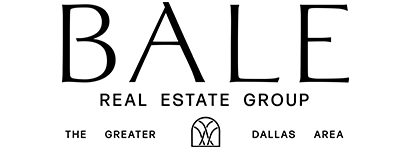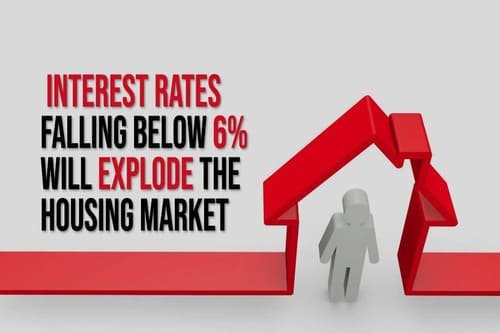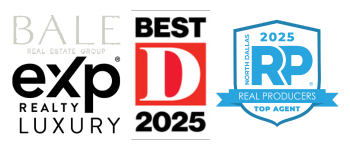 2025 Real Estate Market Forecast for the Greater Dallas Area As we look ahead to 2025, the Greater Dallas real estate market is expected to see continued dynamic growth, driven by several key factors. The region, known for its booming economy, growing population, and robust housing demand, is positioned to remain a top choice for both homebuyers and investors. Let’s dive into some of the trends and forecasts that will shape the real estate landscape in the coming year.
2025 Real Estate Market Forecast for the Greater Dallas Area As we look ahead to 2025, the Greater Dallas real estate market is expected to see continued dynamic growth, driven by several key factors. The region, known for its booming economy, growing population, and robust housing demand, is positioned to remain a top choice for both homebuyers and investors. Let’s dive into some of the trends and forecasts that will shape the real estate landscape in the coming year.
1. Steady Population Growth and Migration
The Dallas-Fort Worth metroplex has been one of the fastest-growing regions in the U.S. over the past decade, and this trend is expected to continue. As more individuals and businesses relocate from other states, particularly from high-cost regions like California, the demand for housing is projected to stay strong. This population influx will likely keep the market competitive, particularly in high-demand areas across North Dallas.
2. Strong Job Market and Economic Resilience
A healthy job market is a significant driver of housing demand, and the Greater Dallas area continues to thrive with a diverse economy. Key sectors such as technology, finance, healthcare, and logistics are growing, attracting both young professionals and families. This economic resilience, combined with relatively low unemployment rates, will likely fuel housing demand across various price points and communities.
3. Home Prices Expected to Stabilize
After a period of rapid price appreciation, the market may experience some stabilization in 2025. While prices are expected to remain high, the rate of increase could slow compared to previous years, providing some relief to buyers. However, prime areas such as Frisco, Plano, and the luxury neighborhoods in North Dallas will likely see steady appreciation, with limited inventory continuing to drive prices upward in these desirable communities.
4. Rising Interest Rates Could Impact Affordability
Interest rates are forecasted to rise moderately in 2025, which could impact affordability for some buyers. As borrowing costs increase, first-time buyers and those seeking to move up may feel some financial pressure. However, for sellers, this may encourage more competitive offers as buyers try to lock in lower rates before further increases occur.
5. Suburban Expansion and New Development
The trend of moving to suburban areas continues to grow, especially as remote work options remain prevalent. Expect continued development and interest in suburban areas like Prosper, Celina, and Melissa, where new communities and master-planned developments offer a range of housing options. This suburban expansion will provide more choices for homebuyers looking for larger lots, more space, and access to good schools while still maintaining proximity to the core Dallas area.
6. Sustainability and Smart Homes
With a growing emphasis on sustainability and technology, the demand for energy-efficient homes and smart home features will continue to rise. Homebuilders and developers in the Greater Dallas area are increasingly incorporating green building practices and advanced home technologies, from solar panels to smart thermostats. Expect more buyers to prioritize these features when searching for homes in 2025.
7. Investment Opportunities
For investors, 2025 holds promising opportunities. The rental market is expected to remain strong due to ongoing population growth and housing demand. Multifamily developments, in particular, are expected to perform well as more individuals seek rental properties before making long-term homebuying decisions. Additionally, real estate investors looking for short-term rentals or flipping opportunities will find continued potential in up-and-coming neighborhoods and redevelopment areas.
Conclusion: A Positive Outlook for 2025
Overall, the Greater Dallas real estate market in 2025 is expected to remain vibrant and competitive. While interest rates and price stabilization may present some challenges, the region’s strong economy, population growth, and expanding suburban communities will keep demand healthy. For both buyers and sellers, staying informed and strategic will be key to navigating this exciting market.
If you have any questions or are considering buying or selling in the Greater Dallas area in 2025, feel free to reach out to us at Bale Real Estate Group. We’re here to help you make the most of the opportunities in this dynamic market.

 Dallas Real Estate Market Update: October 2024
Dallas Real Estate Market Update: October 2024 Bale Real Estate Group is sharing insight into the potential impact the upcoming elections could have on the real estate market, as evidenced by prior trends and analytics. Many homeowners, buyers, sellers, and investors are watching how potential policy changes could affect the real estate market. While it’s common to hear about shifts in taxation, housing affordability, and market regulations during an election year, this election cycle could be even more significant in light of the current state of the economy and real estate market.
Bale Real Estate Group is sharing insight into the potential impact the upcoming elections could have on the real estate market, as evidenced by prior trends and analytics. Many homeowners, buyers, sellers, and investors are watching how potential policy changes could affect the real estate market. While it’s common to hear about shifts in taxation, housing affordability, and market regulations during an election year, this election cycle could be even more significant in light of the current state of the economy and real estate market. Preparing to Sell Your Home in the Fall & Winter: A Seasonal Guide for Home Sellers. The seasons are changing, and while spring and summer are typically seen as peak times for real estate, selling your home in the fall or winter can have some unique advantages. Serious buyers are still on the hunt, and homes can show particularly well during these cozy seasons. If you’re preparing to sell this fall or winter, here are some strategies to maximize your home’s appeal and ensure a successful sale.
Preparing to Sell Your Home in the Fall & Winter: A Seasonal Guide for Home Sellers. The seasons are changing, and while spring and summer are typically seen as peak times for real estate, selling your home in the fall or winter can have some unique advantages. Serious buyers are still on the hunt, and homes can show particularly well during these cozy seasons. If you’re preparing to sell this fall or winter, here are some strategies to maximize your home’s appeal and ensure a successful sale. Interest Rates Fall Below 6%: What This Means for Home Sellers and Buyers. The real estate market is buzzing with excitement as interest rates have recently dipped below 6%. This decrease opens up exciting opportunities for both homebuyers and sellers, creating a shift in the dynamics of the market. But what exactly does it mean for you? Let’s break down how these lower rates could impact your buying and selling decisions and how you can take advantage of this change.
Interest Rates Fall Below 6%: What This Means for Home Sellers and Buyers. The real estate market is buzzing with excitement as interest rates have recently dipped below 6%. This decrease opens up exciting opportunities for both homebuyers and sellers, creating a shift in the dynamics of the market. But what exactly does it mean for you? Let’s break down how these lower rates could impact your buying and selling decisions and how you can take advantage of this change.